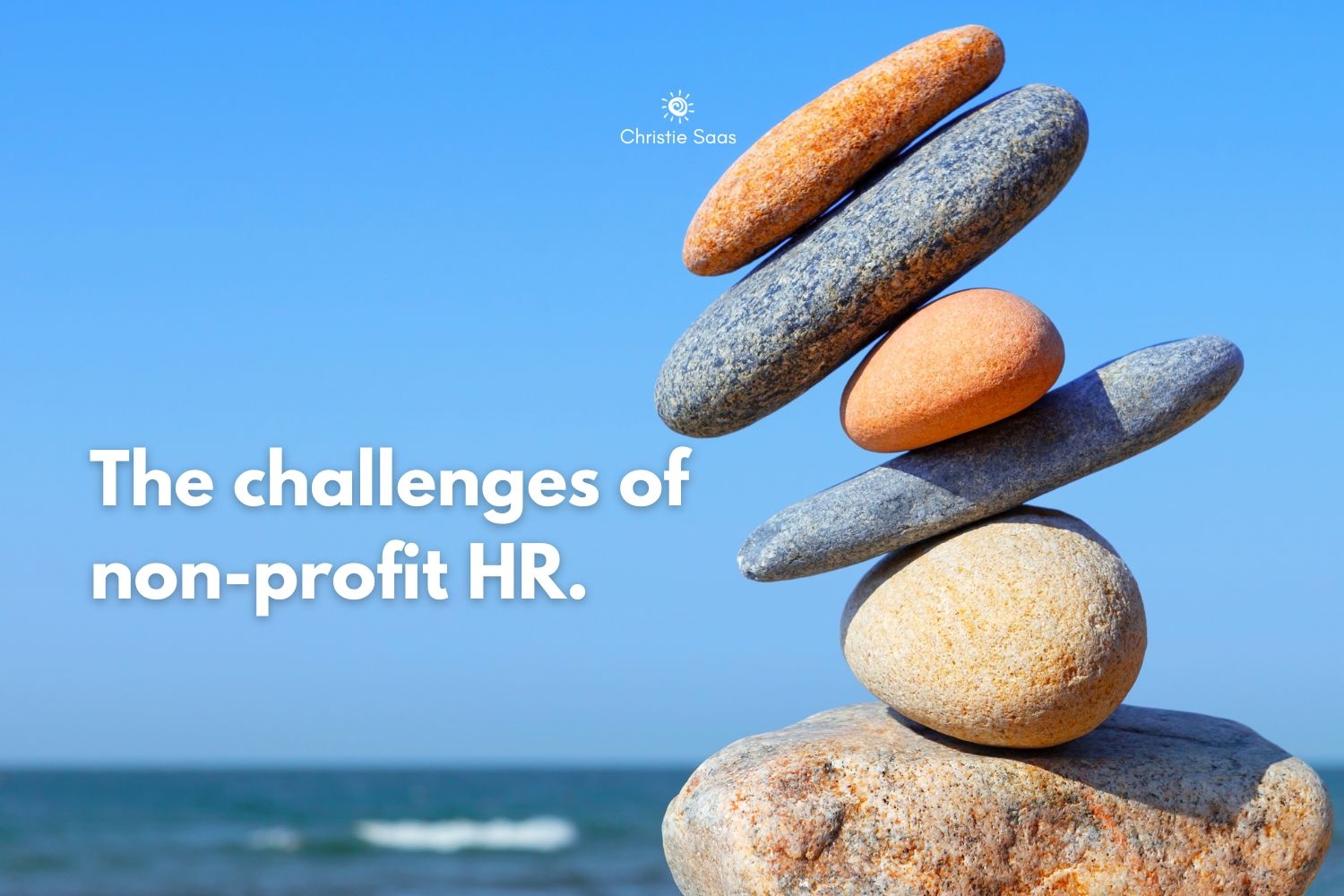The challenges of non-profit HR

Much time is spent reviewing and planning the governing model of a non-profit board of directors letting the operational model of the staff team develop organically, and sometimes a little haphazardly. Limited budgets make choosing the right HR model, critical to achieve goals with the right people for the job.
Success can follow a budget.
Grassroots non-profits on average, have fixed human resources budgets and must find the right fit on a scale from having fewer employees paid a higher living wage, to having more employees paid a lower living wage. The challenge is finding the best place on that scale and understanding when to shift in a different direction.
Fewer employees and a higher wage.
A non-profit will often choose to have fewer employees paid a higher wage when individual members of the staff team have the capacity to handle a larger workload, or the skills to absorb miscellaneous work as part of their general duties. Examples might include an executive director that handles some of the programming work, or a member of the team that takes on the social media.
More employees and a lower wage.
A non-profit will choose to have more employees paid a lower wage when there is a greater need to separate work duties such as bookkeeping, graphic/web design, and tech support. Examples might include an executive director that is required to spend a great deal of time providing strategic reporting to funders or supporting the board of directors and no longer has time for other tasks.
No right or wrong, only right now.
The benefit of finding the right staff team model is the flexibility it provides for an executive director to shift human resources as the non-profit changes and grows.
An executive director might choose to hire a larger team as operational plans become more complex and more people are needed to do the work.
Shifting is very common when an executive director retires and one of the program team takes over the ED role. Rather than fill the program vacancy, the new executive director keeps some of their program duties and hires less expensive contractual help for tasks the former ED handled.
Strong policies and clear job descriptions.
In a perfect world, we would all have non-profits with large budgets and well-paid teams. In the real world, executive directors need to be a little more creative.
When evaluating the HR needs, a non-profit executive director considers the workload, the budget, and the size of the team. Paired with policies to define how the work gets done, and job descriptions to define who does the work, an ED can create the right HR model at any time.
What questions do you have?
What workload-budget-team design are you using? If you have questions or comments, I want to know! Please use the form on the right side of the page to let me know.
-Christie
…
Hi, I'm Christie. I help executive directors develop the systems and processes needed to run a non-profit.
I learned early in my career, there is no non-profit school. Browsing the internet for resources from big-city experts doesn’t provide practical solutions to balance the budget, write a work plan, or conduct an employee evaluation. Leadership development tips don’t really resonate when you are also taking out the recycling and cleaning the washroom.
I created ChristieSaas.com so non-profit leaders never need to wonder how to do the job – no matter how big or small that job is.
I have been the executive director of small-team, small-budget, non-profits for 20+ years. My experience isn’t theory. It is the real, operational, and practical solutions I use every day.
I love my work and I want to help you love yours too.
© Christie Saas 2023 All Rights Reserved
…
Want to learn more?
Start with one of my free resources.


